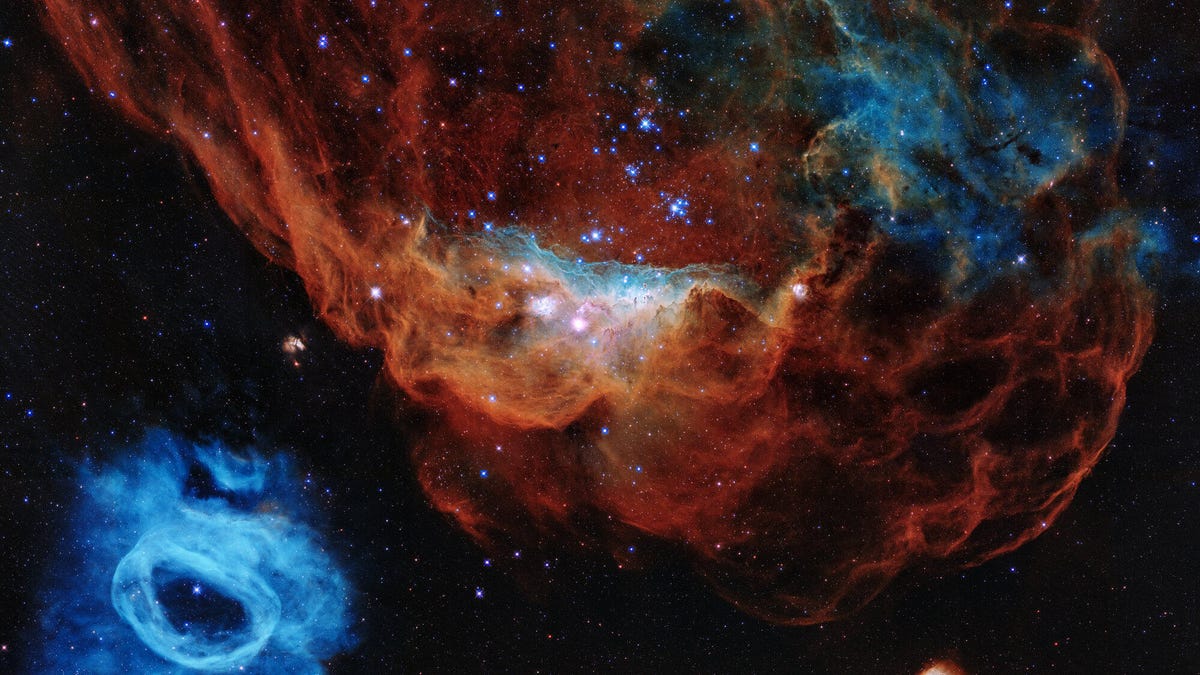NASA celebrates Hubble 30th anniversary with eye-popping 'Cosmic Reef'
NASA and ESA describe the space telescope's image as a "tapestry of blazing starbirth."
The Hubble Space Telescope looks out into the cosmos and brings the beauty and mystery of the universe back to Earth. After 30 years, it's still a source of wonder.
NASA and the European Space Agency (ESA) are celebrating the 30th anniversary of the telescope's launch into space on April 24, 1990. The birthday cake is what the agencies call a "tapestry of blazing starbirth."
Hubble's new "Cosmic Reef" image shows two nebulae, the big red NGC 2014 and the little blue NGC 2020. They live in the Large Magellanic Cloud, an orbiting satellite galaxy of our own Milky Way. At 163,000 light-years away, we won't be visiting anytime soon, but Hubble was able to capture a lovely view of the ethereal, cloudlike areas of active star formation.
"The image is nicknamed the 'Cosmic Reef' because it resembles an undersea world," ESA said in a Friday release. ESA pointed out a group of bright stars near the center of the red nebula "that has blown away its cocoon of hydrogen gas (colored red) and dust in which it was born." NGC 2014's shape gives it its nickname of the Brain Coral nebula.
You can celebrate along with Hubble by looking up what the telescope saw on your birthday.
Hubble has been a resilient machine, but it's needed some human help along the way. Five space shuttle servicing missions kept it in operation. NASA expects it to continue its science mission through the 2020s. It'll eventually be joined in space by its not-yet-launched successor, the James Webb Space Telescope.
"It was revolutionary to launch such a large telescope 30 years ago, and this astronomy powerhouse is still delivering revolutionary science today," said NASA's Thomas Zurbuchen in a release on Friday. "Its spectacular images have captured the imagination for decades, and will continue to inspire humanity for years to come."


